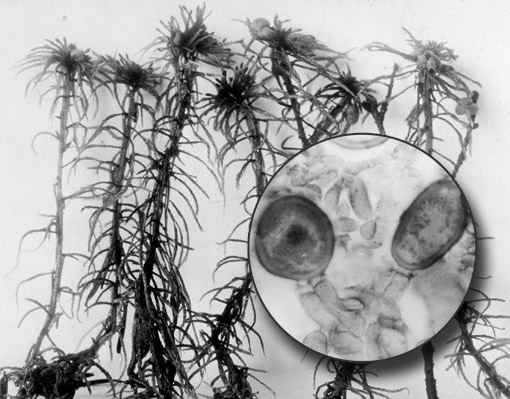Endogone sphagnophila
CUP-A-023872d,f
Atkinson described this fungus based on collections he made in the Adirondack Mountains of New York.1 He was visiting the summer camp of his Cornell colleague F.C. Stewart at Seventh Lake.
He carried some live Endogone home with him, and made an in-depth study. The relationships of this enigmatic fungus to the major fungal lineages were in dispute.
Today Endogone is better understood. A recent study suggests Endogone species may have been key in helping early plants colonize the land.2
2.Bidartondo et al. 2011. The dawn of symbiosis between plants and fungi. Biology Letters. doi: 10.1098/rsbl.2010.1203

Endogone sphagnophila on Sphagnum sp.
The yellow-orange fruiting bodies of t fungus each perch blob-like on top of a moss gametophyte. The inset image shows two thick-walled Endogone spores, each arising from two conjugating cells.
